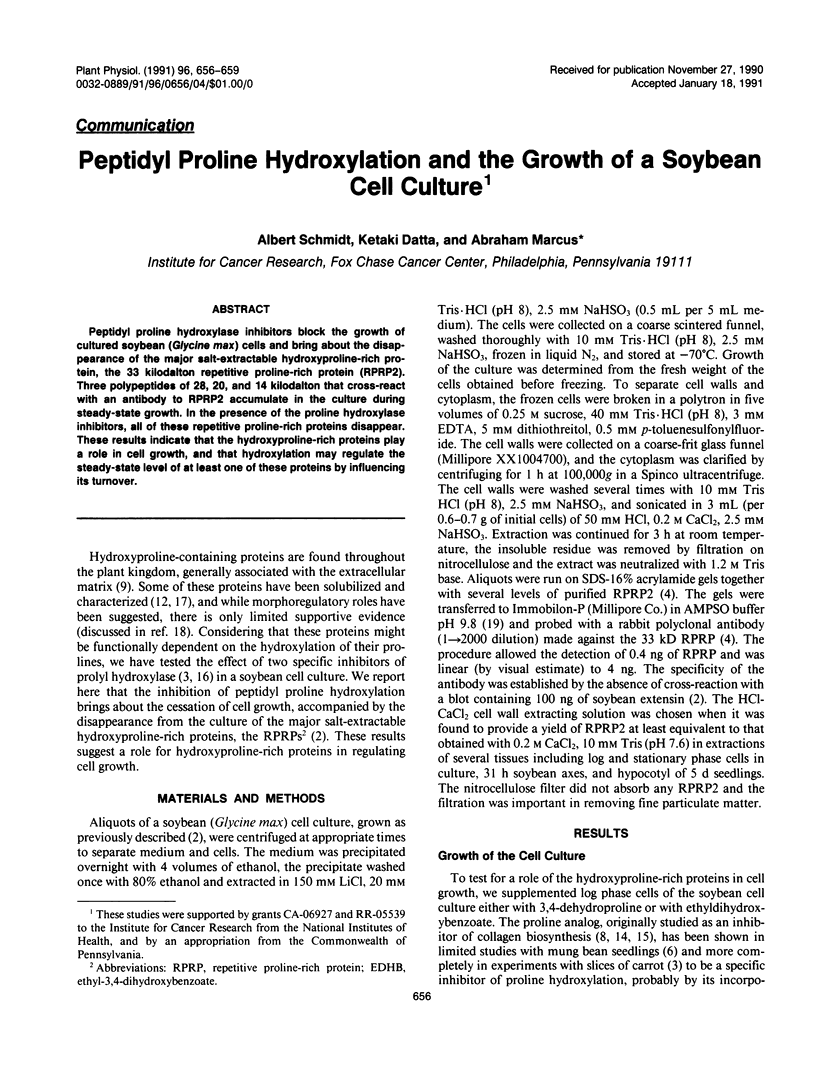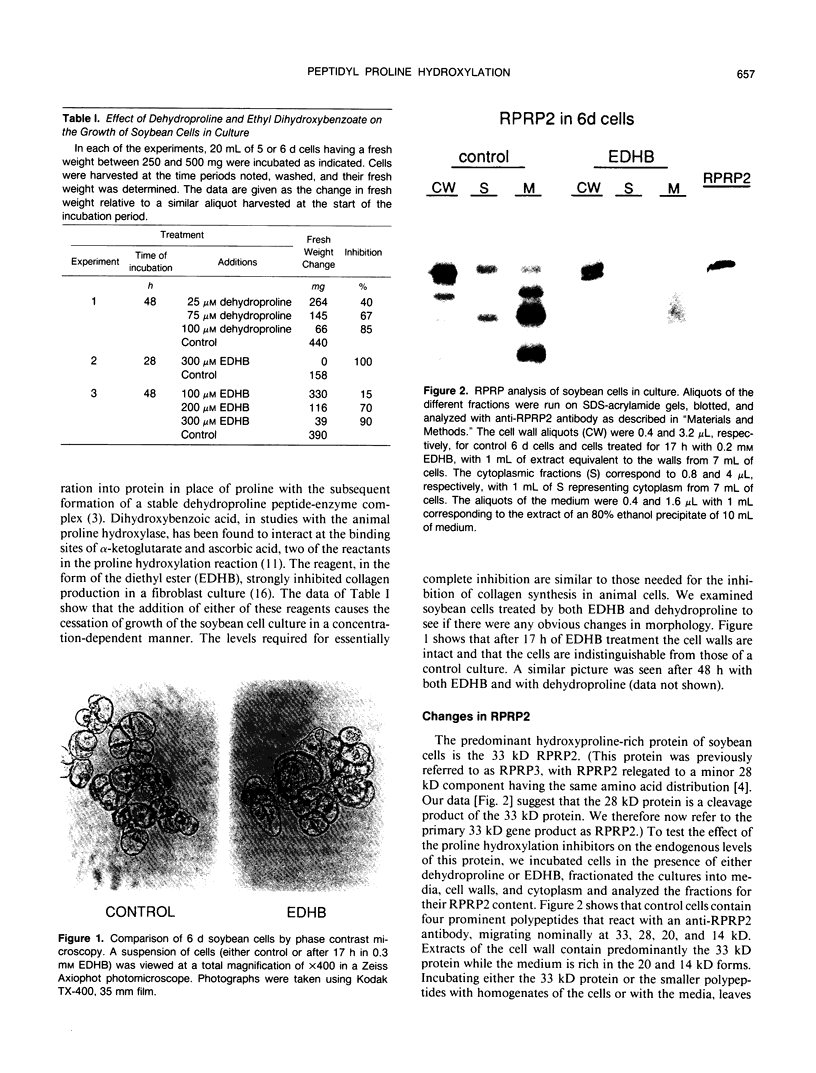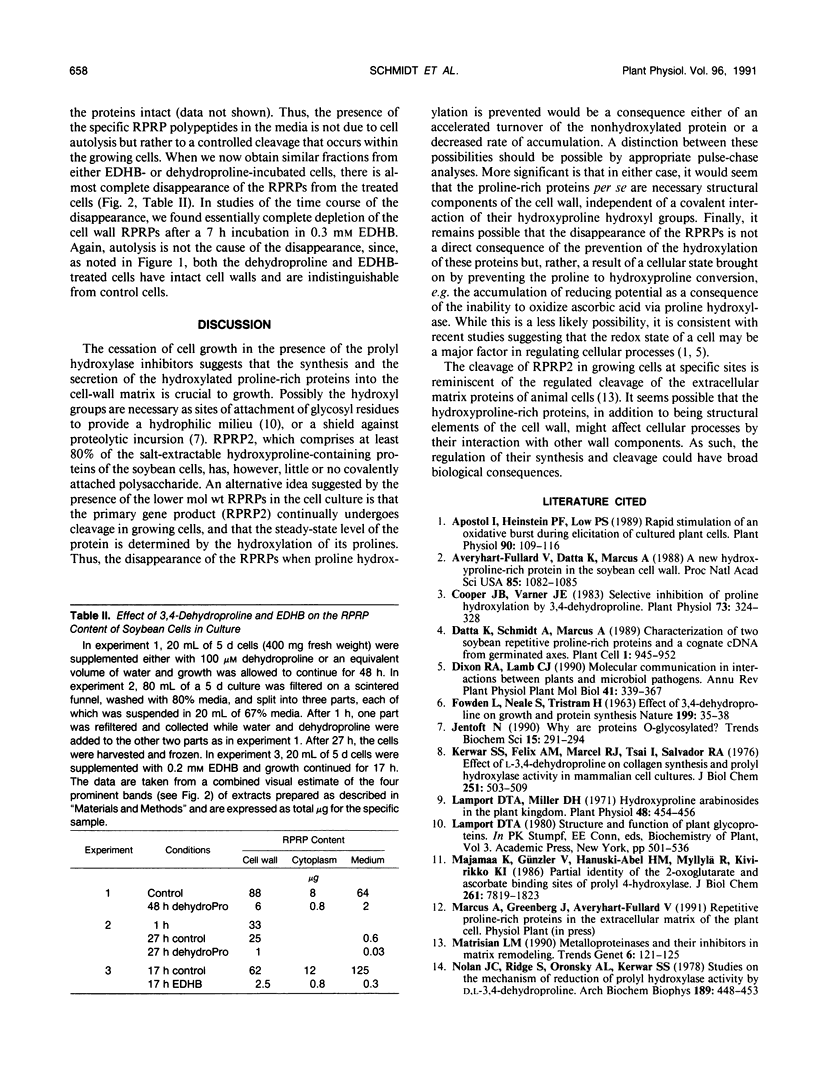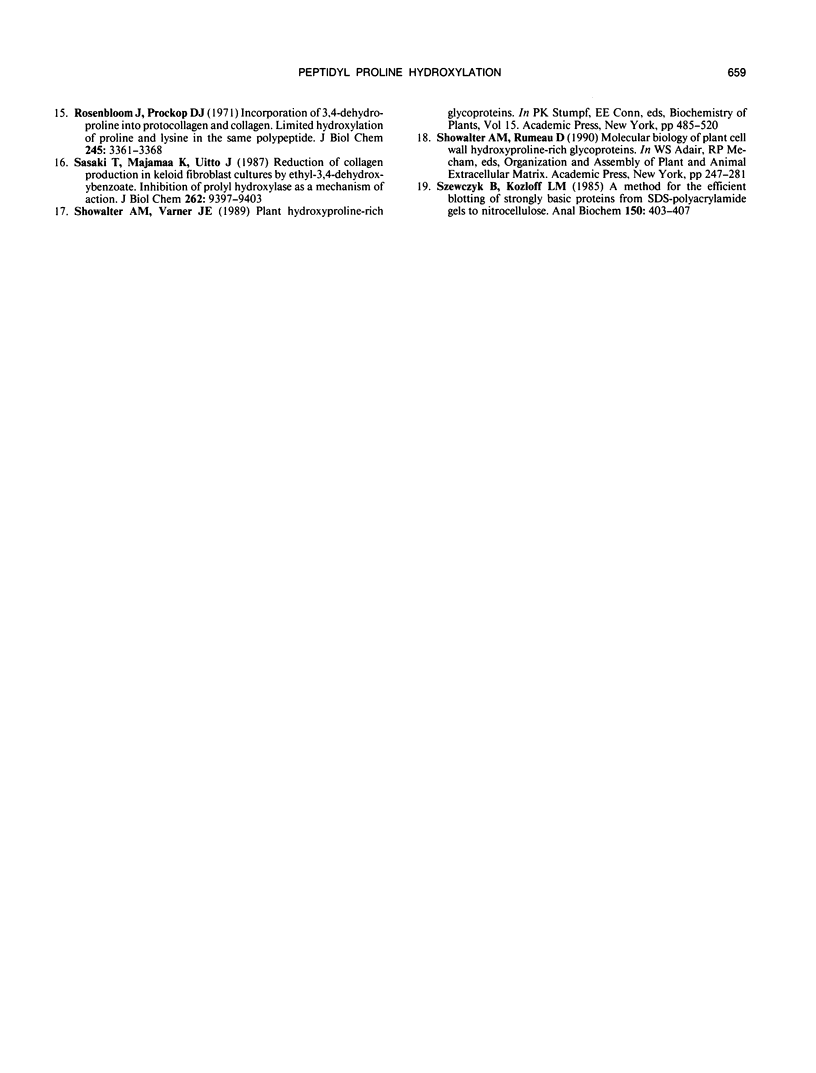Abstract
Peptidyl proline hydroxylase inhibitors block the growth of cultured soybean (Glycine max) cells and bring about the disappearance of the major salt-extractable hydroxyproline-rich protein, the 33 kilodalton repetitive proline-rich protein (RPRP2). Three polypeptides of 28, 20, and 14 kilodalton that cross-react with an antibody to RPRP2 accumulate in the culture during steady-state growth. In the presence of the proline hydroxylase inhibitors, all of these repetitive proline-rich proteins disappear. These results indicate that the hydroxyproline-rich proteins play a role in cell growth, and that hydroxylation may regulate the steady-state level of at least one of these proteins by influencing its turnover.
Full text
PDF



Images in this article
Selected References
These references are in PubMed. This may not be the complete list of references from this article.
- Apostol I., Heinstein P. F., Low P. S. Rapid Stimulation of an Oxidative Burst during Elicitation of Cultured Plant Cells : Role in Defense and Signal Transduction. Plant Physiol. 1989 May;90(1):109–116. doi: 10.1104/pp.90.1.109. [DOI] [PMC free article] [PubMed] [Google Scholar]
- Averyhart-Fullard V., Datta K., Marcus A. A hydroxyproline-rich protein in the soybean cell wall. Proc Natl Acad Sci U S A. 1988 Feb;85(4):1082–1085. doi: 10.1073/pnas.85.4.1082. [DOI] [PMC free article] [PubMed] [Google Scholar]
- Cooper J. B., Varner J. E. Selective inhibition of proline hydroxylation by 3,4-dehydroproline. Plant Physiol. 1983 Oct;73(2):324–328. doi: 10.1104/pp.73.2.324. [DOI] [PMC free article] [PubMed] [Google Scholar]
- Datta K., Schmidt A., Marcus A. Characterization of two soybean repetitive proline-rich proteins and a cognate cDNA from germinated axes. Plant Cell. 1989 Sep;1(9):945–952. doi: 10.1105/tpc.1.9.945. [DOI] [PMC free article] [PubMed] [Google Scholar]
- FOWDEN L., NEALE S., TRISTRAM H. EFFECT OF 3,4-DEHYDRO-DL-PROLINE ON GROWTH AND PROTEIN SYNTHESIS. Nature. 1963 Jul 6;199:35–38. doi: 10.1038/199035a0. [DOI] [PubMed] [Google Scholar]
- Jentoft N. Why are proteins O-glycosylated? Trends Biochem Sci. 1990 Aug;15(8):291–294. doi: 10.1016/0968-0004(90)90014-3. [DOI] [PubMed] [Google Scholar]
- Kerwar S. S., Felix A. M. Effect of L-3,4-dehydroproline on collagen synthesis and prolyl hydroxylase activity in mammalian cell cultures. J Biol Chem. 1976 Jan 25;251(2):503–509. [PubMed] [Google Scholar]
- Lamport D. T., Miller D. H. Hydroxyproline arabinosides in the plant kingdom. Plant Physiol. 1971 Oct;48(4):454–456. doi: 10.1104/pp.48.4.454. [DOI] [PMC free article] [PubMed] [Google Scholar]
- Majamaa K., Günzler V., Hanauske-Abel H. M., Myllylä R., Kivirikko K. I. Partial identity of the 2-oxoglutarate and ascorbate binding sites of prolyl 4-hydroxylase. J Biol Chem. 1986 Jun 15;261(17):7819–7823. [PubMed] [Google Scholar]
- Nolan J. C., Ridge S., Oronsky A. L., Kerwar S. S. Studies on the mechanism of reduction of prolyl hydroxylase activity by D,L-3,4 dehydroproline. Arch Biochem Biophys. 1978 Aug;189(2):448–453. doi: 10.1016/0003-9861(78)90233-3. [DOI] [PubMed] [Google Scholar]
- Rosenbloom J., Prockop D. J. Incorporation of 3,4-dehydroproline into protocollagen and collagen. Limited hydroxylation of proline and lysine in the same polypeptide. J Biol Chem. 1970 Jul 10;245(13):3361–3368. [PubMed] [Google Scholar]
- Sasaki T., Majamaa K., Uitto J. Reduction of collagen production in keloid fibroblast cultures by ethyl-3,4-dihydroxybenzoate. Inhibition of prolyl hydroxylase activity as a mechanism of action. J Biol Chem. 1987 Jul 5;262(19):9397–9403. [PubMed] [Google Scholar]
- Szewczyk B., Kozloff L. M. A method for the efficient blotting of strongly basic proteins from sodium dodecyl sulfate-polyacrylamide gels to nitrocellulose. Anal Biochem. 1985 Nov 1;150(2):403–407. doi: 10.1016/0003-2697(85)90528-7. [DOI] [PubMed] [Google Scholar]




